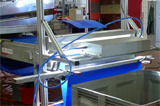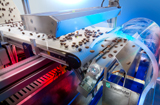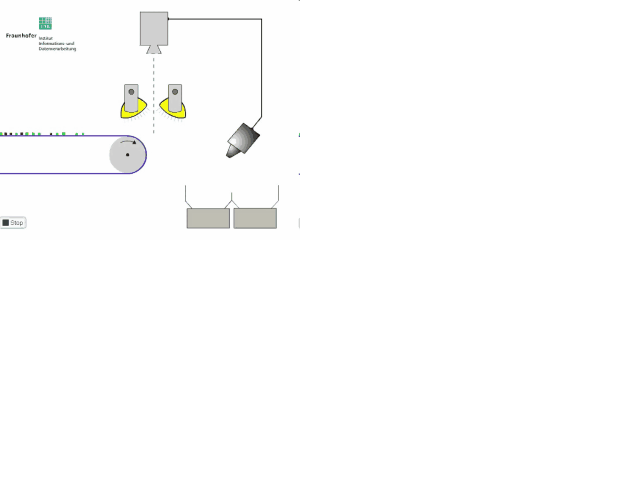Expanding the Premium Range in Grape Use with the Latest Technologies
The winegrowers of Cleebronn & Güglingen tested a new sorting method from Fraunhofer Research during the grape harvest. The multiple award-winning winemakers are always looking for new ways to improve their products even further. Fraunhofer IOSB in Karlsruhe has been a renowned specialist for many years when it comes to the automatic sorting of bulk materials. As their latest application, the researchers have now developed a process with which grapes can be optimally utilized.
The new Fraunhofer IOSB sorting module was integrated as a component in a destemmer at the winery as part of a factory trial. After the harvest arrived at the winery, it was immediately transported to the destemmer for further processing as usual, which separates the grapes from the stems and separates the berries on a conveyor belt. On this conveyor belt, the grapes passed through the sorting module of the Fraunhofer Institute of Optronics, System Technologies and Image Exploitation IOSB. There, the material flow is recorded by a line scan camera and the image is evaluated by a computer in milliseconds. The connected control system for a battery of hydraulic nozzles initiates the blowing out of the detected foreign material by a targeted blast of air. What the system is to assess as "bad" is taught in beforehand: vinegar berries, mold, stems, scaffolding parts, combs, leaflets, insects and the wrong degree of ripeness are common ejection criteria.
During this teach-in process, the system trains the shape and color respectively, sorting predominantly by color. As a result, significant differences in the degree of Öchsle could be measured between "sorted" and "non-sorted" fractions.
The next step will be to carry out extensive sorting trials, which will be accompanied by investigations in other spectral ranges in order to further improve the results in the future on the basis of the spectral information. The aim is not only to sort out foreign and bad parts, but also to separate the entire fraction into two different "Öchsle fractions" (high/low).
Throughputs of approx. 5 t/h could be achieved. In the future, a quantity of approx. 8-9 t/h is expected. The advantage for the winegrowers is a further increase in yield and quality with the simultaneous use of modern, automated harvesting technology. The vines can be completely harvested and only in the pre-processing stage is the harvest sifted and separated. In this way, even higher-yielding top wines can be developed and the premium batches expanded. The short time span of the harvest is optimally utilized by the high-tech support.
 Fraunhofer Agriculture and Food Industry Alliance
Fraunhofer Agriculture and Food Industry Alliance

